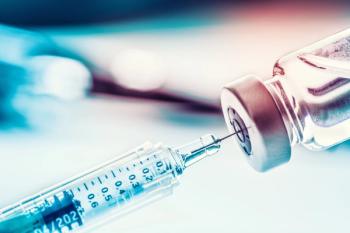
HPV vaccine in pregnancy not linked to adverse birth outcomes
It’s not common, but some women may have been given the 9-valent human papillomavirus (HPV) vaccine either during or before pregnancy. A study examines the effect of such exposure on adverse birth outcomes.
Although it’s predominately administered to children and adolescents, the 9-valent human papillomavirus (9vHPV) vaccine is recommended for people aged 11 to 26 years and was recently expanded to be administered to women up to age 45 years. This age range means that it’s possible for a woman to be given the vaccine during pregnancy and research on the impact of an inadvertent 9vHPV vaccine exposure in pregnancy is limited. A
The investigators use data from 7 health systems in the Vaccine Safety Datalink, which included pregnancies among girls and women who were aged 12 to 28 years that ended between October 2015 and November 2018. They included all singleton pregnancies that ended in a live birth, stillbirth, or spontaneous abortion. Vaccine exposures were distal (9vHPV or 4-valent HPV [4vHPV] vaccine administered from 22 to 16 weeks before last menstrual period [LMP]), peripregnancy (9vHPV vaccine administered from 42 days before LMP until LMP), and during pregnancy (9vHPV vaccine administered from LMP to 19 completed weeks’ gestation).
The study included 1493 pregnancies; in the cohort there were 445 9vHPV vaccine exposures during pregnancy; 496 peripregnancy 9vHPV vaccine exposures; and 552 4vHPV or 9vHPV distal vaccine exposures. The investigators found that administering the 9vHPV vaccine during pregnancy was not linked to an increased risk of spontaneous abortion (hazard ratio, 1.12; 95% CI, 0.66-1.93) when compared to a distal vaccine exposure. Similar findings were found with peripregnancy 9vHPV vaccine exposures (relative risk [RR], 0.72; 95% CI, 0.42-1.24). When looking at the live births (n = 1409), exposure to 9vHPV vaccine during pregnancy was not linked to preterm birth (RR, 0.73; 95% CI, 0.44-1.20) or small for gestational age birth (RR, 1.31; 95% CI, 0.78-2.20) and similar results were seen in peripregnancy exposures among small for gestational age birth (RR, 1.10; 95% CI, 0.65-1.88) as well as preterm births (RR, 0.72; 95% CI, 0.45-1.17). Across all exposure groups, birth defects were rare and happened in about 1% of live births.
The investigators concluded that exposure to the 9vHPV vaccine either during or around pregnancy is not a common occurrence and that when exposure does happen, is not linked to either spontaneous abortions or select adverse birth outcomes. Clinicians should use the findings to advise how they discuss inadvertent 9vHPV vaccine exposures.
Reference
1. Kharbanda E, Vazquez-Benitez G, DeSilva M, et al. Association of inadvertent 9-valent human papillomavirus vaccine in pregnancy with spontaneous abortion and adverse birth outcomes. JAMA Netw Open. 2021;4(4):e214340. doi:10.1001/jamanetworkopen.2021.4340
Newsletter
Access practical, evidence-based guidance to support better care for our youngest patients. Join our email list for the latest clinical updates.








